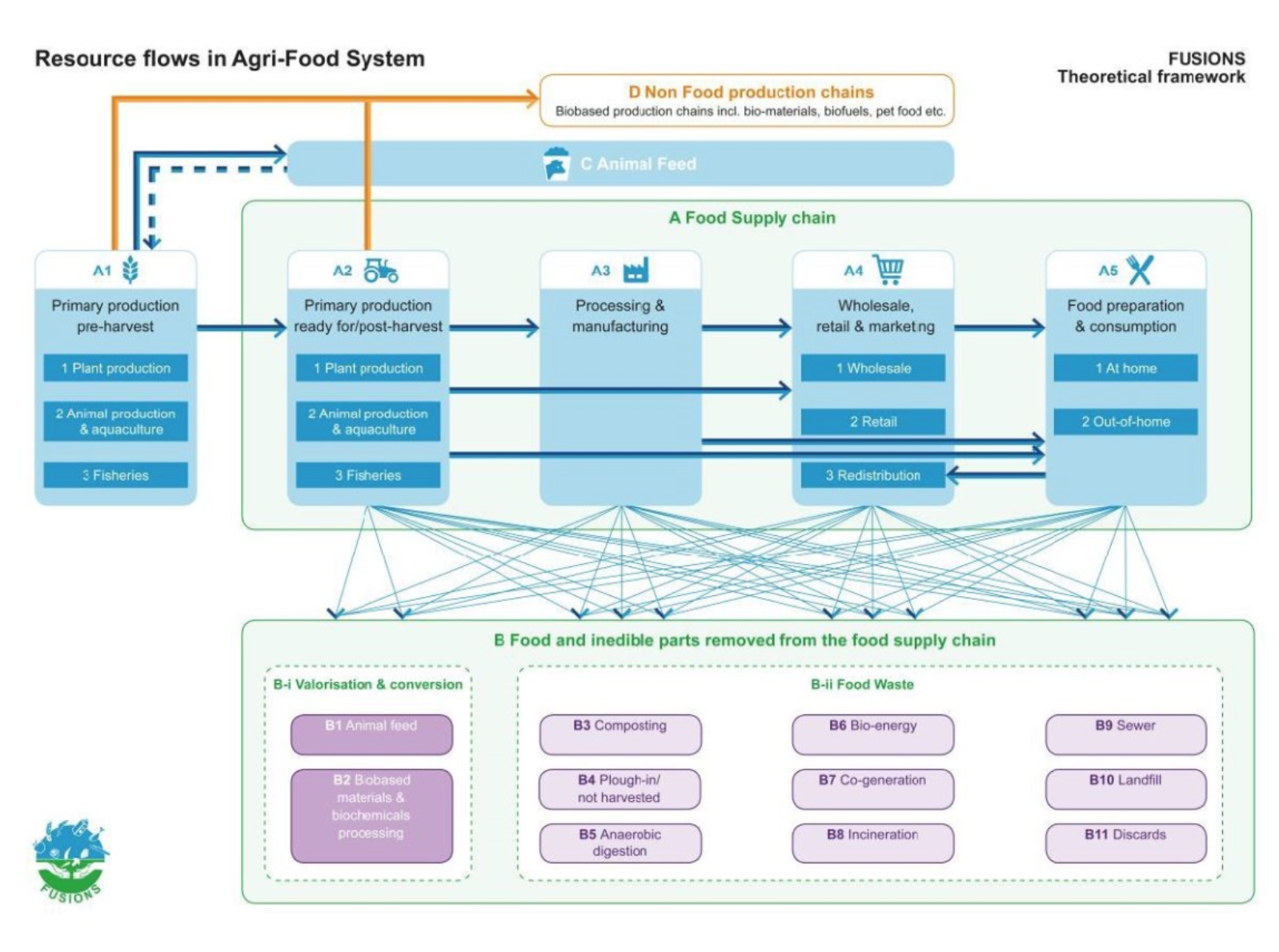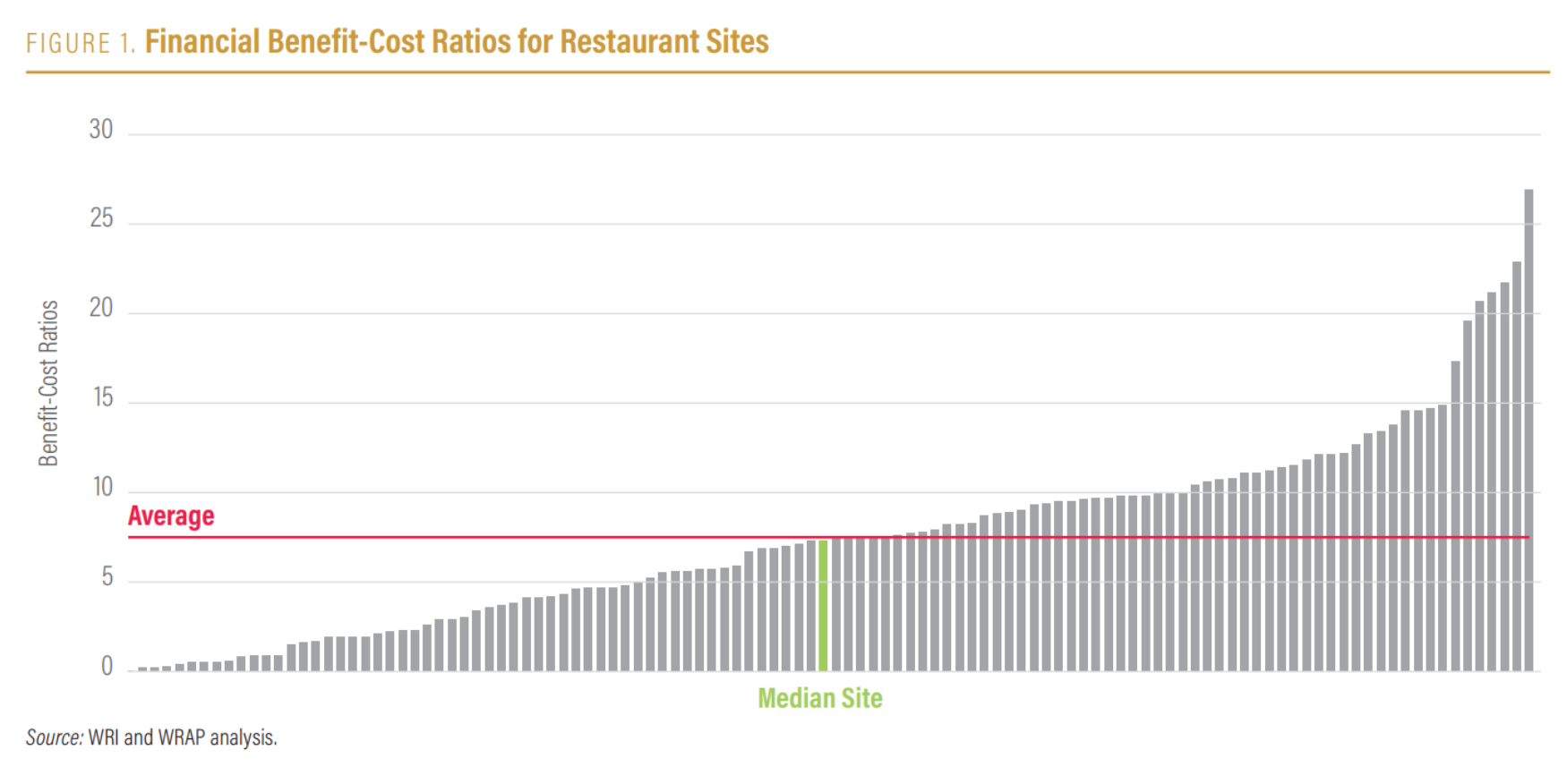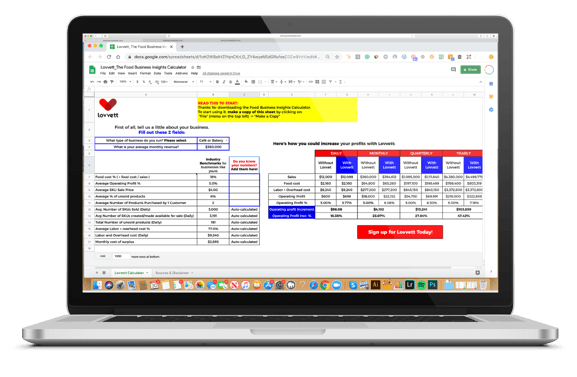The cost of food waste is real. Sure, we can go on and on about the fact that upwards of 40% of American food purchases end up in the trash, but the truth of the matter is a lot more monetary.
In America, more than $300 billion worth of food ends up in the trash each year. With 372.2 million people in the US, that's $800 for each individual.
If money is holding your food business back from ultimate success, it's time to take a look at your food waste metrics. How much is lost organic matter costing your cafe, grocery store or other brand? Let's find out.
What counts as food waste?
According to Fusions, food waste is "any food, and indelible parts of food, removed from the food supply chain to be recovered or disposed."
So what's this mean for folks in the thick of it? From whitefish to persimmons, the food you use to run your cafe, restaurant or other business holds weight.

This chart showcases everything from post-harvest animal production to wholesale distribution, ultimately landing at consumer consumption.
Owning a full-service restaurant, bakery, convenience store or even a flower shop is hard work, and adding more to your plate may not seem...desirable. But considering that you can save at least $6 for every $1 spent reducing your food waste, we're here to make the claim that doing so is worth every penny.
The Average Cost & Benefit of Food Waste for Food Businesses
Champions 12.3 have a lot to say about the cost of food waste. Just like us, they believe it's a strong business concern, and one that goes far beyond the environmental aspect.
Based on an analysis from 114 restaurant sites across 12 nations, they deduced the following:
- Over the course of 3 years, the average food waste reduction benefits vs the cost had a ratio of 7:1. That's a 700% return on investment.
- For 76% of those businesses, they earned their investment back within the first year alone.
- They also trimmed their cost of goods sold (COGS) by an average of 2%.

90% of those businesses were able to keep their food waste reduction investment below $20,000. On average, this number was less than 1% of sales.
While this metric may give you sticker shock, there's no denying that this is a valuable investment. Considering the quick and substantial ROI that every food business experienced as a result of their efforts, it only makes sense.
It's worth noting that geography and market segment had no effect on a food business' benefit-cost ratio. As for how those businesses managed to cut back on lost profit, a few methods proved to be totally worthwhile.
Measuring food waste, educating staff, minimizing overproduction, optimizing inventory and repurposing surplus goods all came in handy. Before too long, all of these implementations became second nature to every one of the 114 restaurants involved.
How to Perform a Manual Food Waste Audit for Your Business
Champions 12.3 said that measuring food waste was one of the main indicators in a business' success. Fortunately, getting started on your food waste reduction efforts doesn't have to be complicated. Specialty Food provides 5 clear steps to conducting a food waste audit. It goes a little something like this.
- Define your business goals.
Without a clear path, you're going to be messing around with food waste for no good reason. What's your dream achievement? What do you hope to uncover from your audit? The more specific, the better. - Set aside some space for the audit.
Conducting a food waste audit takes room. Find a place where you can set up a table and get to work. Gather a few buckets for separating waste by category. Don't forget to acquire eye protection and a scale, the latter of which you'll use for weighing the goods. - Sort and separate the waste.
Now we're getting into the nitty gritty! You can sort your waste into a few categories, including waste from plates and spoiling. Determine what's unrecoverable versus what's recoverable. - Weigh and measure.
Weigh the materials and measure their volume. Doing both of these things helps you determine how much water weight your food waste includes. Try taking a picture; this allows you the opportunity to visually compare your waste in the future (like a before and after pic)! - Analyze!
Measuring your food waste means nothing without a proper analysis. This is precisely what will allow you to develop a waste reduction strategy. Determine the percentage of what's eaten, how much food makes it to the plate, how much spoils on the shelf and more.
Translating Food Surplus Into Dollars
Let's do a little math. Americans waste $300 billion of food each year. 40% of that waste comes from consumer-facing businesses. That means these types of food businesses waste about $120 billion of food over the course of a single year.
Sure, there are hefty grocery-store chains and national restaurant organizations that can afford to eat this cost. But what about the little ones, the small businesses who could use a boost in profit and revenue? By cutting down on food waste, these companies will see a mere sliver of that $120 billion dollars, but that's a substantial number nonetheless.
As far as we're concerned, we could all use extra income, especially the kind that keeps on coming. By measuring your food waste and making a conscious effort to reduce its impact, you'll reap the rewards of your investment sooner rather than later.
Use This Calculator to Learn How Much You Could Be Making
We're serious about food waste and the money tied to it. That's why we've crafted a thoughtful calculator to determine how much food waste is costing your business and how much profit and customer base expansion you can earn from fighting food waste through Lovvett.
Here's how to use the calculator:
Nothing speaks more clearly than numbers. This calculator shows you firsthand just how much financial potential your food surplus holds—and it does so in numbers that relate directly to your food business.
Download the full calculator for free to learn just what kind of profits you can earn from revalorizing unsold products. With the help of Lovvett and other food waste fighting tactics, you can easily surpass these industry standard profit margins. Use our calculator as a benchmark to propel you forth, and don't be afraid to see where the road takes you!
Letting Food Waste Teach Us
If you've been caught off guard by the number before you, we want you to know that there's a better way. Owning a food business is all about learning from past mistakes, and learning how to revalorize your surplus is key. Knowing how much food waste costs your brand is the first step in making the change toward a more profitable and sustainable food business.
Let Lovvett Cut Down Your Calculation
Lovvett is in the business of food surplus revalorization, not food waste. Above all else, we're in the business of helping your brand thrive through new customers and complimentary marketing. We believe in turning surplus into profits, all so food waste won't have such a grasp on food businesses of every kind. Read our resources and maximize your profit and revenue, simply by saying NO to waste.
Download the Food Business Insights Calculator here










.png) by lovvett ® 2020
by lovvett ® 2020